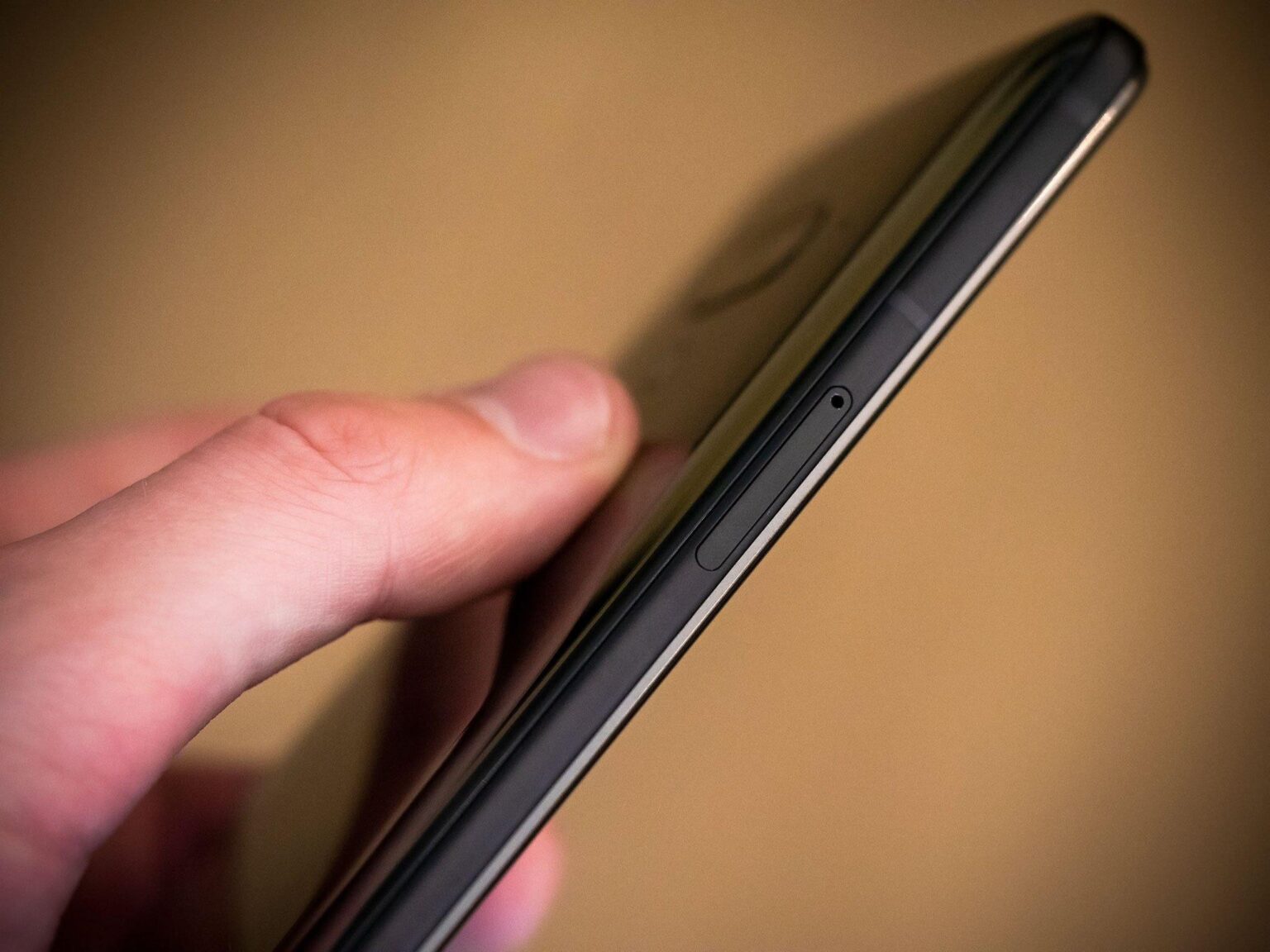In a world where touchscreens have become the norm, the evolution of smartphones continues to push boundaries-this time by eliminating buttons altogether. Phones with no buttons are no longer just a futuristic concept; they are rapidly becoming a sought-after trend that redefines how we interact with our devices. This sleek, minimalist design promises not only aesthetic appeal but also a new kind of user experience, blending form and function in unexpected ways. But what is driving this shift toward buttonless phones, and why are consumers and manufacturers alike embracing this bold move? Let’s explore the forces behind this intriguing trend and what it means for the future of mobile technology.
Table of Contents
- The Rise of Buttonless Phones and Their Impact on User Experience
- Design Elegance Meets Functionality in Modern Touch-Only Devices
- Accessibility Innovations Driving the Popularity of Buttonless Smartphones
- Challenges and Solutions in Transitioning to Fully Touch-Based Interfaces
- Choosing the Right Buttonless Phone for Your Lifestyle and Needs
- The Conclusion
The Rise of Buttonless Phones and Their Impact on User Experience
As technology advances, the tactile buttons that once defined our phone interactions are gradually fading into nostalgia. The shift towards sleek, buttonless designs is more than aesthetic-it’s a revolution in how users engage with their devices. By eliminating physical buttons, manufacturers have created seamless surfaces that encourage intuitive touch gestures and voice commands, transforming the user experience into something fluid and futuristic.
One major impact of this evolution is the enhanced aesthetic appeal and durability of phones. Without buttons, devices are less prone to mechanical failures, reducing wear and tear. This not only extends the lifespan of the phone but also allows for slimmer, more water-resistant models. The smooth glass fronts invite users to explore multi-touch capabilities and haptic feedback, making interactions feel both responsive and immersive.
The transition also presents unique challenges and opportunities in accessibility and usability. While some users initially miss the tactile reassurance of buttons, advancements in software have introduced customizable gestures, voice assistants, and adaptive interfaces that cater to diverse needs. The learning curve is softened by intuitive design, turning what could be a barrier into an empowering feature.
- Pros: Sleek design, improved durability, advanced gesture controls
- Cons: Initial adaptation phase, reliance on software stability
- Innovations: Haptic feedback, AI-powered voice commands, edge-to-edge displays
| Feature | Buttoned Phones | Buttonless Phones |
|---|---|---|
| Durability | Moderate | High |
| User Interaction | Physical feedback | Gesture & Voice |
| Design | Traditional | Minimalist & Modern |
| Learning Curve | Low | Moderate |
Design Elegance Meets Functionality in Modern Touch-Only Devices
In the realm of innovation, the seamless integration of design and utility has become paramount. Modern touch-only devices embody this philosophy, offering a sleek silhouette free from the clutter of physical buttons. This minimalist approach not only enhances the visual appeal but also redefines user interaction, making every swipe and tap intuitive and fluid.
The absence of buttons unlocks several advantages:
- Maximized screen real estate: Without buttons interrupting the frame, displays can extend edge-to-edge, enriching multimedia experiences and improving readability.
- Enhanced durability: Fewer moving parts mean less wear and tear, reducing the chance of mechanical failure and improving the device’s longevity.
- Water and dust resistance: A seamless glass surface without openings significantly improves protection against environmental factors.
Beyond aesthetics and resilience, touch-only devices leverage advanced software to compensate for the lack of tactile buttons. Gesture controls, haptic feedback, and voice commands converge to create a user experience that feels natural and responsive. This fusion of technology ensures that functionality never takes a backseat, even as the hardware design pushes the boundaries of simplicity.
| Feature | Benefit | User Impact |
|---|---|---|
| Edge-to-Edge Display | Immersive visuals | Enhanced viewing pleasure |
| Haptic Feedback | Simulated button press | Intuitive navigation |
| Gesture Controls | Effortless commands | Streamlined interaction |
| Glass Surface | Seamless design | Elegant feel & durability |
Accessibility Innovations Driving the Popularity of Buttonless Smartphones
In the realm of smartphone design, removing physical buttons has opened up new avenues for inclusivity. For individuals with limited dexterity or motor impairments, navigating a device without tiny, hard-to-press buttons can be a game-changer. Advanced voice recognition and gesture controls have become pivotal, allowing users to interact with their phones seamlessly without the need to physically touch or press anything.
Haptic feedback technology has also been reimagined to provide tactile responses on flat surfaces, enabling users to “feel” virtual buttons. This innovation bridges the gap between the tactile experience of traditional buttons and the sleek, smooth design of buttonless phones, offering both accessibility and aesthetic appeal.
- Customizable voice commands that adapt to individual speech patterns
- Gesture controls that recognize subtle hand movements for common functions
- Dynamic on-screen button placement to suit different user needs
| Feature | Accessibility Benefit | User Impact |
|---|---|---|
| Voice-Activated Controls | Hands-free operation | Enhanced independence |
| Haptic Feedback | Tactile confirmation | Improved navigation accuracy |
| Custom Gestures | Personalized input | Faster interactions |
These technological strides are not only making smartphones more usable for everyone but are also setting new standards for what users expect from their devices. The seamless integration of accessibility features into buttonless designs illustrates a future where technology adapts to diverse needs without compromising on style or functionality.
Challenges and Solutions in Transitioning to Fully Touch-Based Interfaces
Moving away from physical buttons introduces a fresh set of complexities that manufacturers and users alike must navigate. One major hurdle is tactile feedback. Without the familiar click or press sensation, users can feel disconnected from their devices, leading to accidental taps or missed commands. To combat this, haptic technology has evolved, delivering subtle vibrations that mimic button presses, bridging the gap between touch and feel.
Another challenge lies in accessibility. Buttons offer a tactile guide for individuals with visual impairments or limited dexterity. Transitioning entirely to touch interfaces risks alienating some users, unless thoughtfully designed with adaptive gestures, voice commands, or customizable sensitivity settings. The key is striking a balance between sleek design and universal usability.
Furthermore, environmental factors like wet or gloved hands can impair touch responsiveness, posing a significant obstacle. Manufacturers are exploring advanced capacitive sensors and AI-driven predictive inputs to maintain accuracy even under less-than-ideal conditions. These innovations ensure that touch-only devices remain functional and reliable in diverse real-world scenarios.
| Challenge | Solution |
|---|---|
| Loss of tactile feedback | Haptic technology with customizable vibrations |
| Accessibility concerns | Voice controls and adaptive gestures |
| Touch responsiveness in adverse conditions | Advanced sensors and AI predictive input |
Choosing the Right Buttonless Phone for Your Lifestyle and Needs
When selecting a buttonless phone, it’s essential to align the device’s features with your day-to-day activities and preferences. These phones often emphasize sleek touch interfaces and innovative gesture controls, which can dramatically enhance usability for those who prioritize minimalism and modern design. However, the lack of physical buttons means you should consider how comfortable you are with touchscreen navigation and voice commands.
Consider these factors to find the perfect match:
- Usage Patterns: Are you constantly on-the-go, needing quick access to apps, or do you prefer a simple, distraction-free device?
- Accessibility: If tactile feedback is important for you, look for phones that offer haptic feedback or customizable touch sensitivity.
- Durability: Buttonless phones often feature glass surfaces that can be more prone to damage-opt for models with reinforced screens or water resistance.
- Software Ecosystem: Check if the phone supports your favorite apps and integrates well with other devices you own.
| Feature | Ideal For | Example Use Case |
|---|---|---|
| Voice Control | Hands-free users | Driving or cooking with voice commands |
| Gesture Navigation | Minimalists seeking smooth interaction | Swiping through apps without distractions |
| Haptic Feedback | Users missing physical buttons | Typing with tactile sensations |
Ultimately, the right buttonless phone is the one that complements how you live and work. Whether you prioritize cutting-edge tech or straightforward usability, there’s a growing range of options designed to fit diverse lifestyles. Exploring these choices with your everyday needs in mind ensures that your transition to a buttonless device will be seamless and satisfying.
The Conclusion
As the sleek surfaces of buttonless phones continue to captivate users, they symbolize more than just a design trend-they represent a shift toward simplicity, seamless interaction, and futuristic possibilities. While some may miss the tactile reassurance of physical keys, the allure of uninterrupted glass and intuitive gestures is reshaping how we connect with technology. Whether this trend will stand the test of time or evolve into yet another chapter in mobile innovation remains to be seen. For now, phones without buttons invite us to embrace a new kind of touch-one that is as much about experience as it is about function.


